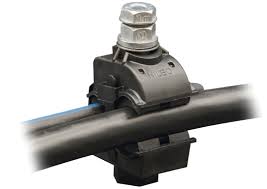Electrical connections are a crucial part of most electrical installations. And in today’s entire world, in which basic safety and efficiency go hand in hand, creating a secure and safe electrical relationship is a priority for many electricians. Nonetheless, traditional ways of producing electrical connections may be time-taking in and sometimes may even lead to severe accidents. That’s where by Insulated Piercing Connections (IPC) are available in.
Insulated Piercing Connectors have revolutionized electrical connections, and it’s time for you to talk about the advantages of using them. In this article, we shall leap into everything you should understand about IPC, the way they function, their functions, and how they may aid enhance electrical connections with performance.
1. Exactly What Are Insulated Piercing Connections?
Piercing Connector are a form of electrical connector that permits you to link up two cables without stripping insulating material. IPC operates by piercing the insulating material on a single wire and producing exposure to the wire’s conductor. Other cable will then be placed in the connector and repaired in position by using a attach or clamp. IPCs come in a variety of shapes and sizes, according to the program.
2. How Do Insulated Piercing Connectors Job?
As mentioned previously, IPCs work by piercing the wire’s insulation to get in touch with the conductor. These connections use a higher-energy deterioration-proof aluminum that fails to react with the wire’s conductor. The connector also provides heat retaining material that gives an additional layer of safety against any potential shorts or electrical existing leakages.
3. Which are the Advantages of Insulated Piercing Connections?
The key benefits of Insulated Piercing Connections are wide ranging. Firstly, IPCs are quick, and so they assistance to improve electrical connections, decreasing installment time. In addition, IPCs assist to get rid of the danger of human being error, which may arise during stripping insulation. IPCs may also be supply-insulated, meaning they prevent any probable electrical currents from leaky or shorting out. Eventually, IPCs can be really dependable and may stand up to a wide range of temperatures. IPCs can be found in various shades, which makes it simple to recognize the wire’s cycle, helping lessen faults during installation.
4. How you can Set up Insulated Piercing Connections?
Setting up IPCs is not hard and can be done in a few simple actions. Initially, be sure that the cable is neat and dried out. Then, put the cable in to the proper connector and tighten up the attach or clamp up until the cable is repaired in position. Finally, look at the wire’s link with make certain it is actually firm and safe.
5. When Should You Really Use Insulated Piercing Connections?
Insulated Piercing Connections are extremely functional, and they can be utilized in a variety of electrical installs where by electrical connections are produced. IPCs are perfect for outdoor and underground electrical setups where there is limited entry to electrical wiring. IPCs can also be ideal for retrofitting or upgrading existing electrical installs.
Simply speaking:
In In short, the Insulated Piercing Connector is definitely an outstanding innovation that streamlines electrical connections with performance. Some great benefits of making use of IPCs consist of time savings, reducing the potential risk of individual mistake, preventing any probable electrical spills, and offering a dependable source of electrical connections. IPCs give you a convenient strategy to electrical installs, generating this process speedier, less difficult, and more reputable. So, if you’re contemplating modernizing your electrical installment, it’s time to switch to IPCs.



